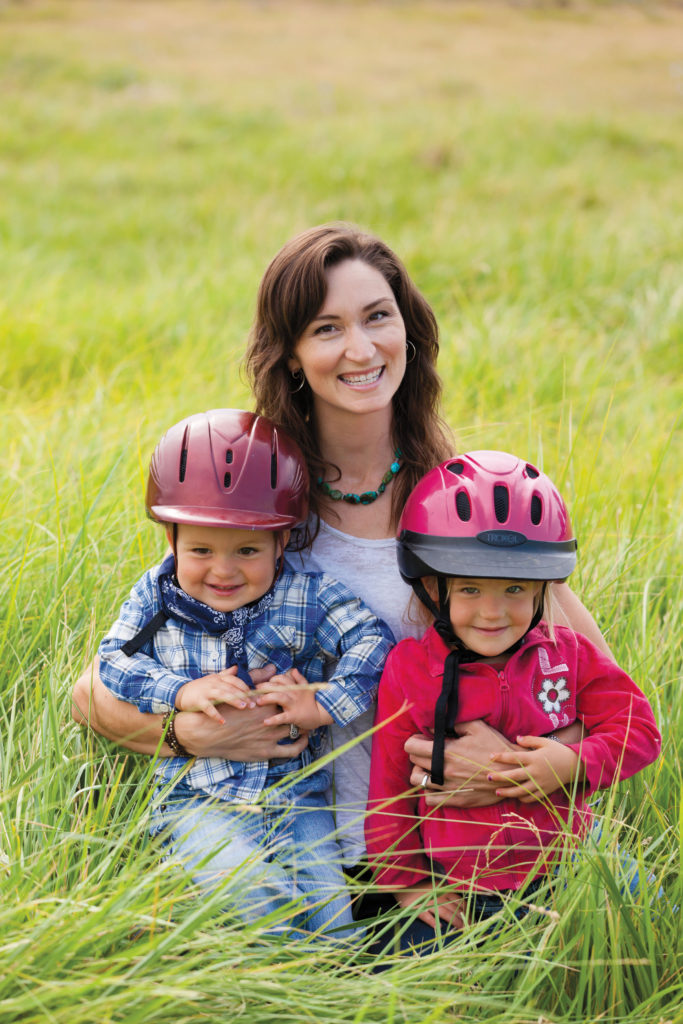It’s normal for children to have fears. Kids may have bad dreams, be frightened of the dark, or find a movie scene scary. However, kids can develop fears that interrupt their everyday life, such as a fear of speaking in front of others, fear of being dropped off at school, or fear of trying new things. Here are some tips to help kids face, and overcome their fears.
Give permission to feel afraid — be honest
Parents can let kids know that it is perfectly normal and acceptable to be scared. When you give a child permission to feel afraid, they can begin to acknowledge what is frightening them and face it head-on.
Parents can provide tips on how to deal with different situations and work through the situation together. Lauren Heller, a mother of twins, says, “For my preschoolers, we spend time talking about the event starting a few days before. I try to help them know what to expect and allow them to ask questions.”
If there is a possibly stressful event soon, it is best to be as honest as possible with your child, so they know what to expect. “I try my best to prepare my kids in advance for scary situations. If there is a medical procedure coming up, I tell them what is going to happen. I never say it won’t hurt if it really will,” says Fia Swartwood, mom of two. “My honesty has helped my kids through lots of situations.”
In the short term, half-truths or sugar-coating might help your child before a scary situation, but in reality, the trust that you build through honesty helps kids in the long term.
Some fears have easy solutions
Try to pinpoint what exactly your child is afraid of and discuss ways to handle her fear best. Jane Hammond’s nine-year-old daughter was fearful of falling during an ice-skating competition. Together, they discussed what would be the result of her falling and decided the answer was simply get back up, no big deal. “She did fall once in a competition, then got back up and finished. She was glad for the experience!” says Jane.
Other problems may have easy solutions that kids can’t always think of on their own. For instance, if your child is afraid of the dark, using a night light may help solve the problem.
Each time your child is afraid, offer a wide variety of options that can be used to overcome fears. A child may be able to calm down by singing a song, hugging a stuffed animal, telling a joke or declaring that monsters aren’t real.
Giving your child the tools they need to face their fears while also reassuring them you are always there to help allows them to try to handle fear on their own knowing that you have their back if it doesn’t work out.
Stephanie Loux, mom of three, says, “I also keep the wins in my back pocket to remind them of past successes. It encourages them to try new things because they remember how well it worked out in the past.” This technique works great for scary situations such as trying a roller coaster, speaking in front of a crowd or trying a new extracurricular activity.
Reward your child’s bravery
As you watch your child overcome fears or at least make efforts to face the things that scare them, reward them for their bravery. Giving positive feedback and acknowledging their efforts will encourage your child to keep trying to confront the things that cause them fear and anxiety. A parent’s praise can build a child’s confidence in preparing them to face a variety of challenges.
As you work these steps with your child, continue to be patient and supportive. “When our kids are scared, we let them know Mommy and Daddy are bigger and tougher than anything scary. And we will always protect them,” says Amy Cameron, mother of three. “We have defeated monsters in the dark by reassuring them that as parents, we make the rules and there are no monsters allowed in our house.”
It is normal to have fears, and it is appropriate to explain this to your child. As scary situations arise, encourage your children to share their feelings with you so that you can deal with them together.
Books to Help Kids Face Their Fears
- Scaredies Away! A Kid’s Guide to Overcoming Worry and Anxiety (Made Simple) by Stacy Fiorile
- Chicken Lily by Lori Mortensen
- Bear Feels Scared by Karma Wilson
- There’s an Alligator Under My Bed by Mercer Mayer
- First Day Jitters by Julie Danneburg
- The Monster at the End of this Book by Jon Stone
- The Invisible String by Patrice Karst
- The Little Old Lady Who Was Not Afraid of Anything by Linda D. Williams
- Curious George Goes to the Hospital by H. A. Rey
- The Lion Inside by Rachel Bright
Posted in: Health & Nutrition
Comment Policy: All viewpoints are welcome, but comments should remain relevant. Personal attacks, profanity, and aggressive behavior are not allowed. No spam, advertising, or promoting of products/services. Please, only use your real name and limit the amount of links submitted in your comment.
You Might Also Like...

Eating Healthy on a Budget
Fruits and Veggies for Families Eating Their Best on a Budget Sage advice, but isn’t it expensive? Eat fresh. Eat organic. Eat a variety of fruits and vegetables every day. […]

Silly, Healthy Birthday Breakfast
Birthdays mean cake and ice cream, right? And maybe a piñata full of candy? Sometimes birthdays can mean one big sugar rush. To get the next birthday in your house […]

Have a Healthy Thanksgiving
As we welcome the cooler weather and look forward to planning our Thanksgiving feasts, it’s easy to wonder whether we might make the holiday spread a bit healthier and more […]

What’s So Essential About Omegas?
Omega Essential Fatty Acids You’ve probably heard a lot about the importance of getting enough Omega-3 and Omega-6 acids in your diet. But what are they? And why are they […]





